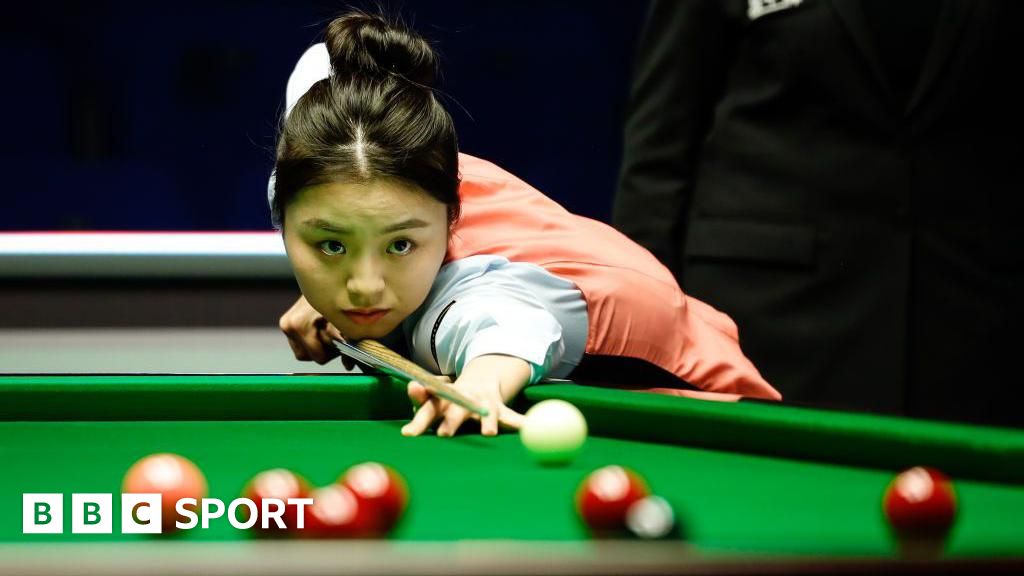ARTICLE AD BOX
Best shots of Wyatt's 87
Ffion Wynne
BBC Sport Journalist
England's preparation for this autumn's T20 World Cup in Bangladesh is going pretty smoothly.
Since a disappointing semi-final exit at the last edition of the tournament in February 2023, they have beaten six-time world champions Australia in the Ashes' T20 series, beaten India and New Zealand away and cruised to a 3-0 series win over Pakistan to start the 2024 season.
A shock series defeat by Sri Lanka at the end of last summer is the only significant blip.
They have refined the attacking brand of cricket that coach Jon Lewis has instilled, but to topple Australia at the helm will require near-perfection.
Their form is positive, and a home T20 series against New Zealand is still to come later in the summer to build further confidence, but there are still a few question marks over certain aspects of England's game which, if refined, should see them as strong contenders to take a first world title since 2017.
The inconsistent top order
England's opening partnership is one of the most inconsistent areas of their T20 game
As England seek to be more aggressive in their approach, they are prepared to accept failure - but the consistency of their opening pair arguably requires the most improvement.
Since the end of the last T20 World Cup, England's opening partnership has fluctuated plenty, culminating in Sophia Dunkley's omission from the Pakistan series.
In that time, the opening stand has averaged just 20.82 - only Bangladesh and Scotland are beneath them of the 10 teams to qualify for this year's tournament, while Australia are way ahead at the top with 43.57, followed by South Africa with 41.53.
Their average powerplay score in that period of time is less stark, but they are still in fifth with 43. Crucially, both Australia and India - who are likely to be their toughest competitors - are slightly ahead of them with 46.6 and 44.8.
England's middle order is their strength - Heather Knight, Amy Jones and Nat Sciver-Brunt are a very reliable, world-class trio and Jones' player of the series performance against Pakistan was particularly timely after a lean couple of years.
But they cannot do it all, and they cannot do it every time. Bouchier and Wyatt are still adapting to opening together as Wyatt and Dunkley formed the partnership for a considerable time, but both will need to fire in Bangladesh to take the pressure off numbers four, five and six.
The pace attack conundrum
Since the retirement of all-time great Katherine Sciver-Brunt in May 2023, seamer Lauren Bell, 23, has gone from strength to strength - but her effort in leading the pace attack has generally been a solo one in the shortest format.
Given that the upcoming World Cup is in Bangladesh, the lack of pace options may not hinder England too much because of their spin strength, but that is a gamble.
There are all-round options, but Nat Sciver-Brunt is bowling less frequently after recent injury struggles and Danielle Gibson is still finding her feet in international cricket, while Freya Kemp is still in the process of a gradual return to bowling after a stress fracture.
In the three matches against Pakistan, England used three different opening bowling combinations to suggest they are still in the process of figuring out which works best.
Lauren Filer, who replaced the resting Bell in the third T20 at Headingley, has raw pace which could be a valuable asset on slow sub-continent pitches but her consistency is an area of concern.
"Generally, against teams in the sub-continent, genuine pace is their weakness," said Katherine Sciver-Brunt.
"Especially against someone with Filer’s height and the extra pace, because they aren’t used to it. But other teams, namely Australia, will enjoy that pace if it isn’t on target - they’ll send it to all parts.
"I love what she brings, seeing her charging in, but seam bowling gives you no margin for error in those conditions and England's seamers have a long way to go in terms of getting that consistency."
Who takes the number seven spot?
Gibson hits the first six of the match
The position at number seven has also caused England a few headaches over the past year, but against Pakistan, Gibson's performances with the bat and in the field strengthened her case significantly.
She scored 41 from 21 balls in the first T20 at Edgbaston and 18 from nine balls at Northampton - both crucial contributions that propelled England to match-winning totals in a short amount of time.
If Kemp is back bowling in time, she will also be in the frame as a similar, power-hitting all-rounder but with the added perk of being left-handed, which is a rarity for England.
In Bangladesh, too, England may prioritise the extra batting at seven and rely on the spin of Sophie Ecclestone, Sarah Glenn and Charlie Dean to do the bulk of the bowling.
And despite recent inconsistency at seven, finishing the innings is one of England's strengths - they are second to only Australia since the end of the last World Cup in terms of runs scored from the last five overs, averaging 48 to the world champions' 51.
But that goes to show the importance of improving things at the top. Knight, Sciver-Brunt, Jones and Gibson or Kemp are capable of providing brutal onslaughts if they have the comfort of a solid platform behind them.

 6 months ago
36
6 months ago
36








 English (US)
English (US)